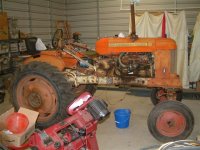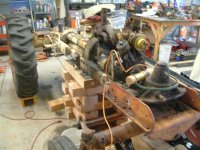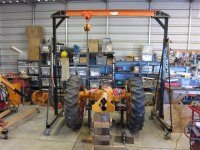When restoring old tractors, how far do you go? I know it depends on many factors, but...
Do you completely disassemble the tractor, removing every nut, bolt, and screw? Or do you do something in between? Obviously a new coat of paint is part of the process but what about sandblasting, gaskets and seals, clutches, engine rebuild, wiring, tires, rims, etc...?
When I see a tractor advertised as being "restored", I can't help but ask myself just how far did they really go? Unless they have proof, how can one every really know, until it's too late? This is why I plan to do my own restoration, so I can be certain it was done right, but can't help but wonder how far I want to go when the time comes.
Do you completely disassemble the tractor, removing every nut, bolt, and screw? Or do you do something in between? Obviously a new coat of paint is part of the process but what about sandblasting, gaskets and seals, clutches, engine rebuild, wiring, tires, rims, etc...?
When I see a tractor advertised as being "restored", I can't help but ask myself just how far did they really go? Unless they have proof, how can one every really know, until it's too late? This is why I plan to do my own restoration, so I can be certain it was done right, but can't help but wonder how far I want to go when the time comes.


